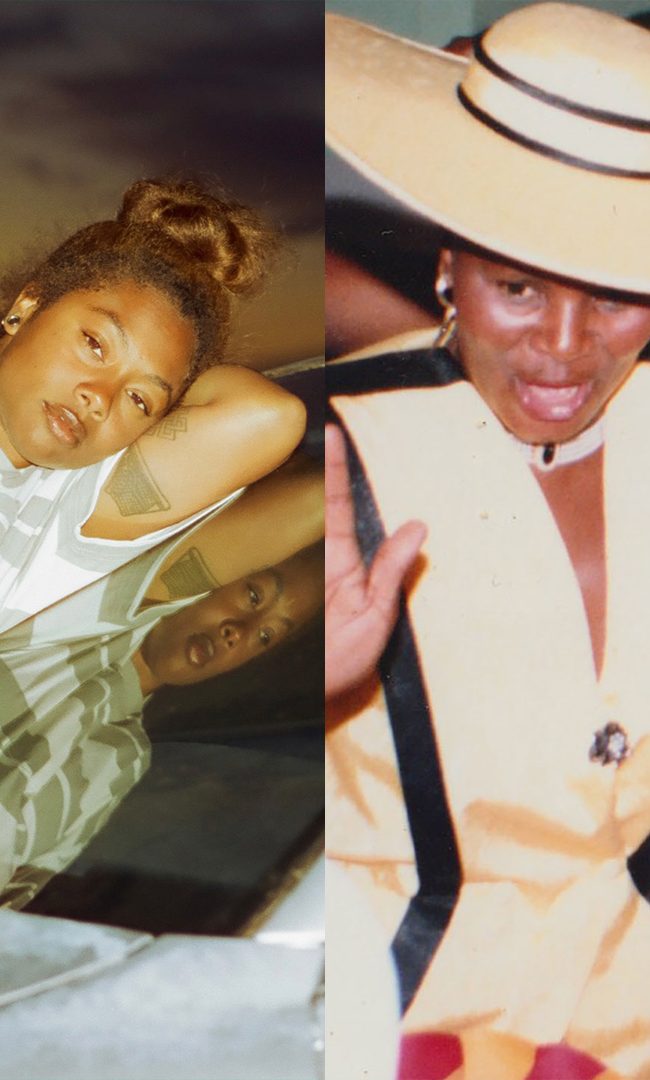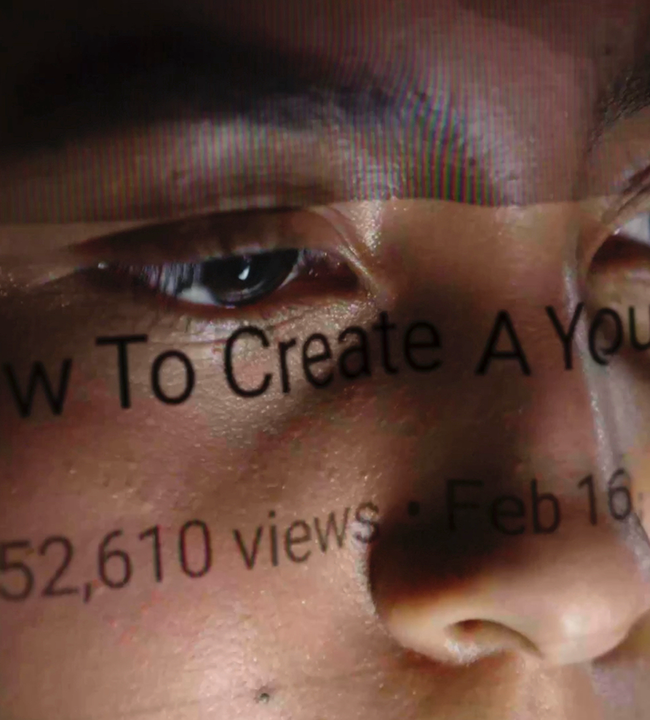I like to watch movies in a theater, on a big screen. At worst, I like to watch them on television, on a smaller screen. When it comes to online viewing, it’s hard for me to concentrate long enough to get through a music video. I’ve tried watching webisodes, but I have yet to find one that has kept my attention for longer than a full episode. I have fought to watch short films in many different online venues (IFC’s Rooftop Films Short Film Showcase, Wholphin, Atom, Funny or Die, etc.), but I never feel like I’m giving this work the attention that it deserves (I’m more worried about getting back to Gmail to see if a new message has arrived in my inbox). While that’s all fine and dandy, here comes the part where I’m going to get downright controversial and show just how old-fashioned I really am: I have never wasted hours, days, and nights dorking around on YouTube, picking one subject and then letting that trail lead me to another clip and another clip and another clip and another clip. Don’t get me wrong, I’m sure these raging You Tube benders lead to moments of grand enlightenment, I just find it virtually impossible to get through anything lasting longer than four minutes before my brain spins me in another direction and has me clicking onto another page.
Let it be known that I am very well aware this is the direction in which our world is headed. While I’m not here to pine for the days of yore or anything silly like that, I thought I should be honest about my online viewing habits. When it comes to watching films—feature, short, sitcoms, videos, etc.—I prefer to watch them offline, on a screen that isn’t connected to the internet. This is something I will one day have to conquer, admittedly, and as websites develop this concept further and put viewers in touch with faster, higher quality content, there will almost certainly come a day when I will be able to watch all eight hours of The Thorn Birds on a 2”x3” YouTube monitor in one sitting and not get antsy. But for now, I have a major chip on my shoulder and am trying to find a way flick that sucker off.
Having said all of this, perhaps I’m not the right person to write about YouTube’s new independent film page, The YouTube Screening Room, for those very reasons. Or in a strange twist of logic, maybe this makes me the perfect person for the job! For the fact remains that at this very moment, I am floating in the space between the past and present, between my love of watching short films offline and my aversion to watching them online. Further, as an independent filmmaker who’s interested in receiving compensation for his films, as well as a writer who would love to continue getting paid to write about low-budget cinema, I feel this latest step by YouTube has the potential to be an important one. At the very least, it will hopefully provide another valuable piece to the puzzle and help us figure out if, and how, there’s money to be made by exhibiting films online. Nobody knows what is going on in this industry, but a development like The YouTube Screening Room can only be a positive thing.
YouTube’s plan is to unveil four new shorts every two weeks, which viewers can rate and comment on and watch to their heart’s content. Actually, not to take too wide of a sidetrack, but this leads into another worry of mine when it comes to online viewing. I constantly hear people talking about how many times their short has been watched online (or, God forbid, their webisode), or how many times their song has been listened to on their MySpace page, but I don’t trust these numbers. For who’s to say if anyone watched or listened past the first five seconds? The same goes for something like my personal blog hosted by indieWIRE. I simply don’t trust these general statistics, because I don’t think they’re telling the honest story. For instance, today my internet kept cutting out and I ended up clicking on one of the below films like ten or fifteen times before it finally loaded all the way and I could watch it. Do all of these isolated clicks count for another film view? Maybe not, but either way, I simply don’t believe that when it says a film has been viewed 896,000 times that it has actually been watched from beginning to end that many times. But I’ll save that essay for another day.
The second wave of films in The YouTube Screening Room is up, and if the numbers are to be trusted (I just said they weren’t but go with me here), it looks like people are certainly tuning in to some degree. They are at least aware enough of The Screening Room to click on the individual pages of each of these films. Here are my brief thoughts on the films themselves, with their view totals as I write this:
School of Life (254,639)
This film won the 2004 British Independent Film Award for Best Short. It’s certainly nicely photographed and well executed across the board, and while it has a nice enough punch line, it felt a bit like a commercial or music video to me. Which leads me to wonder: if I had seen this in a shorts program at a film festival, would my reaction have been any different? Which leads me to answer: Probably. In its small box format when the resolution was highest, it looked quite striking but distractingly small. So I opened it to full screen, but at that point it lost its cleanliness and became blurrier. I then went back to the original, smaller box to finish it out and decided that it was better to watch a higher resolution image that was tiny than to watch a pixelated, blocky image that filled the screen. The fact that my review of this film is more concerned with my struggle to watch it than the content itself is quite telling, but we still have three more films to go, so who knows what’s going to happen.
The Clap (176,187)
This is a clever comedy that features a genuinely funny lead performance by Steve Furst. It’s the story of a goofy classical music aficionado who infuriates his favorite composer by insisting on being the first person to clap at the conclusion of every piece. The Clap is one of those visually dazzling shorts that could have been smothered by the style, but fortunately the performances and writing are given as much attention. With this one, I felt comfortable with the size but I also thought on numerous occasions that I wanted to be watching it on a bigger screen.
I Met The Walrus (442,252)
Ladies and gentlemen, we have a winner! I Met the Walrus is one of those exceptional shorts that works in whatever format it’s exhibited: theater, television, or even through a tiny frame on a computer monitor. It’s a striking collaboration between Josh Raskin (director), James Braithwaite (illustrator), and Jerry Levitan (producer, star), in which Raskin and Braithwaite bring visual life to a 1969 interview the then 14-year-old Levitan recorded with John Lennon. As the hissy interview unfolds and the starstruck teen interviews his hero, Raskin and Braithwaite unleash a torrent of animated images that humorously and poignantly bring that fateful interview to visual life. With I Met the Walrus, I was too swept away by the film itself to be critical of the format in which I was watching it. I can only imagine how this would play on a bigger screen in a more controlled environment.
The Big Empty (259,489)
Taken from Wholphin: No. 1, acclaimed cinematographer Newton Thomas Sigel (Three Kings, X-Men) and his wife Lisa Chang’s ambitious twenty-minute adaptation of Alison Smith’s short story “The Specialist” is certainly a cinematic achievement. My first thought, as a lowly independent filmmaker, was that the budget for this twenty-minute short was probably ten times that of my first two features combined. Selma Blair stars as a confused young woman who has a mysterious ache inside her soul and falls under the control of a doctor (Elias Koteas) who turns her into an Elephant Man-like spectacle. Only in this modern era, the stage isn’t at a carnival, it’s in front of a talk show audience with television monitors. I’m sure they show Sigel’s film on the first day of class at the USC or UCLA film schools. This is one of those whimsical, visual works that was made to wow and resonate like a full-fledged feature. As impeccably executed as it was, I found it hard to concentrate on it in this teeny-tiny format. Midway through, I realized that I was watching the time bar countdown as intently as I was watching the film itself. With regards to The Big Empty, I feel strongly that this film would have been better served had it been exhibited in a more traditional environment (I can only imagine that Wholphin is using this venue as advertising, in order to inspire people to buy their DVD issues based on the films they see here).
Personal shoulder chips aside (to most of you this probably sounds like a decrepit Luddite writing about the first time he ever ventured online), the most important thing is that, as independent filmmakers, our work finds an audience. Second to that is receiving financial compensation for our efforts. It sounds like YouTube’s initial hope is that they will be working as advertisers in order to link from these films to pages where viewers can actually purchase them (see: Wholphin and The Big Empty). But how many people are going to buy a short film that they just watched for free? Of course, I hope the answer to that is many. I’m just not sure if I would do that myself. However, one thing I did do is buy The Execution of Solomon Harris on iTunes after reading David Lowery’s review on this very site last week. Which isn’t the exact same thing. But it’s something.
— Michael Tully











